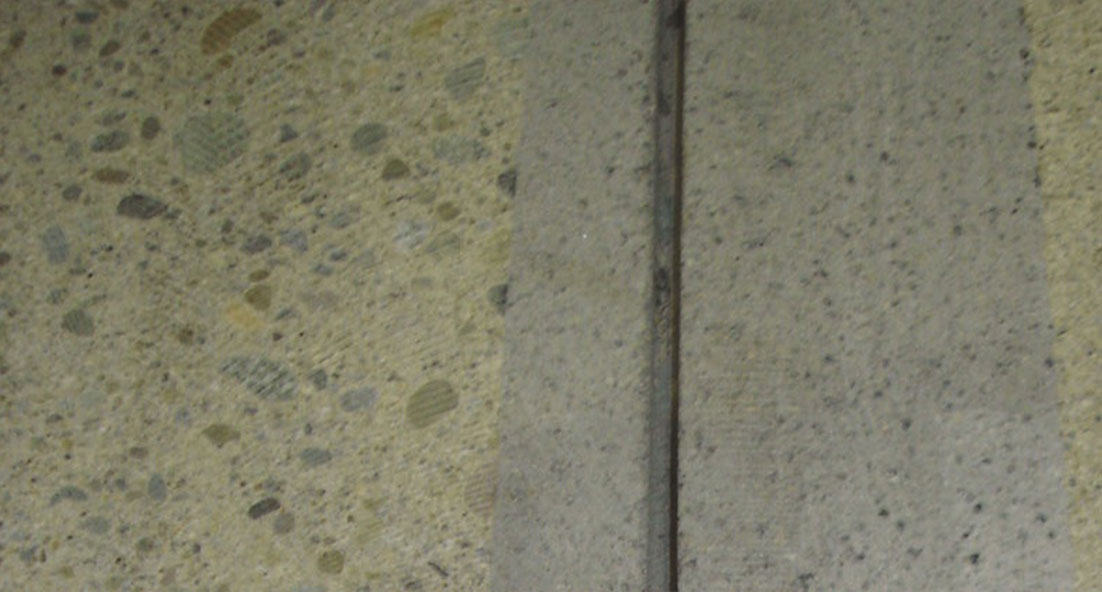
Expansion joints are used to compensate when concrete expands or shrinks with changes in temperature. Concrete expansion joints are used to separate slabs and concrete from other parts of the structure.
Concrete is rigid in structure, much like glass, it does not bend or stretch without cracking. Concrete’s high compressive strength and hardness make the concrete useful for flooring applications in many industries. However, concrete moves during expansion and shrinkage, due to which the structural elements shift slightly. Expansion joints are spaces between concrete slabs that are filled with a flexible sealant, like silicone or urethane. The type of sealant chosen must be weather and/or temperature resistant. Moreover, if you expect to be subjecting your flooring to a lot of traffic, it is important to select a sealant especially manufactured to withstand heavy foot traffic. The environment can take it’s toll on concrete, from direct sunlight to freezing temperatures and snow/rain — all of these conditions can cause concrete to move, and you will need to allow room for it to do so.
Why Expansion Joints in Concrete Are Necessary
To prevent harmful effects due to concrete movement
Several expansion joints are incorporated in concrete construction, including foundations, walls, roof expansion joints, and paving slabs. These joints need to be carefully designed, located and installed. The flexible expansion joints are basically designed to mitigate the flexural stresses. These stresses are produced due to the vertical movements of applications adjoining rigid foundation components, like columns or foundations. If a slab is positioned contiguously on surfaces exceeding one face, an expansion joint will be necessary to reduce stresses. For example, if a slab is located between two structures, an expansion joint is essential adjoining the face of one building. The concrete sealer may be used for the filling of gaps produced by cracks.
Expansion joints permit thermal contraction and expansion without inducing stresses into the elements.
An expansion joint is designed to absorb safely the expansion and contraction of several construction materials, absorb vibrations, and permit soil movements due to earthquakes or ground settlement. The expansion joints are normally located between sections of bridges, paving slabs, railway tracks, and piping systems. Weather changes during the year produce temperature variations that cause expansion and contraction in concrete paving slabs, building faces, and pipelines. The expansion joints are incorporated to endure the stresses. An expansion joint is simply a disconnection between segments of the same materials. In the concrete block construction, the expansion joints are expressed as control joints.
Installation of Expansion Joints
It is highly advisable that any concrete structure that is going to require numerous expansion joints needs to be designed by a qualified structural or civil engineer. The site is prepared for the concrete pouring and the provisioning of the expansion joints in slabs. An individual expansion joint is created by the insertion of a flexible material that runs along the joint length. Suitable tools are used for making grooves in the poured concrete for placing of the joint materials. The depth of an expansion joint is usually one fourth of the slab thickness, or more if necessary. The expansion joint gap depends on the type of slab, like floating slab floor, vehicle pavement, sidewalk, or monolithic slab foundation. It is also influenced by the slab dimensions, type of concrete, and the reinforcing materials being used. Cracks in concrete may occur at the expansion joints due to improper concrete mix or curing. These conditions cause shrinkage between the expansion joints and cracks can be formed.
Find out how to repair a damaged or cracked concrete floor in our guide.

[…] and expand with temperature, however, it cracks as a result. This is why it is important to have expansion joints built in to allow for this cracking. These encourage expansion to occur along the groves instead of […]